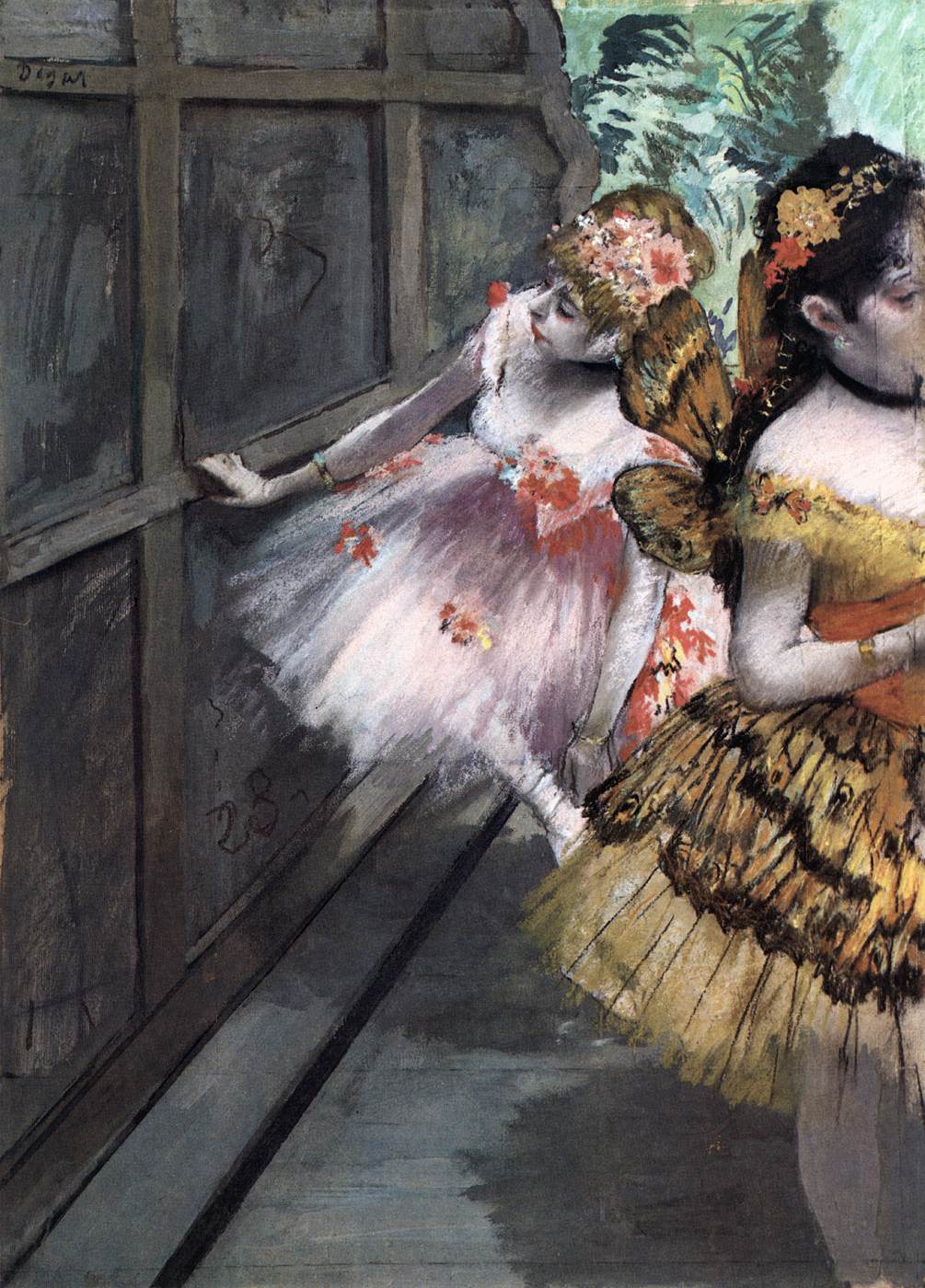Description
The painting "Dancers in the Wings" by French artist Edgar Degas is a masterpiece of impressionism that captures the grace and beauty of dancers backstage at a theater. The painting, which measures 69 x 50 cm, was created in 1879-1880, and is currently in the collection of the Musée d'Orsay in Paris.
One of the most interesting aspects of this painting is the artistic style used by Degas. As one of the leading representatives of Impressionism, Degas focused on capturing light and movement in his works, and in "Dancers in the Wings" we can see how he uses loose, vibrant brushstrokes to create a sense of movement and energy in the composition. .
The composition of the painting is also remarkable. Degas places the dancers in the center of the image, surrounded by a crowd of blurred figures in the background. This creates a feeling of privacy and isolation, as if the dancers are in their own world, away from the bustle of the theater.
The use of color is also impressive in this work. Degas uses a soft and delicate palette of pastel tones to create a feeling of lightness and elegance. Pink and blue tones blend smoothly, creating a sense of harmony and balance in the composition.
The story behind the painting is also fascinating. Degas was a great admirer of dance and spent many years studying and drawing dancers backstage at the theaters of Paris. "Dancers in the Wings" is one of many works he created on this theme, reflecting his passion for dance and his ability to capture the beauty and grace of dancers.
As for little-known aspects, Degas is said to have created several versions of this painting, some of which include more figures in the background. It is also known that Degas was very demanding of himself and often worked on his works for many years, making small adjustments and refinements until he was completely satisfied with the end result.
In summary, "Dancers in the Wings" is an impressive work that shows the skill and talent of Edgar Degas as an artist. From its distinctive artistic style to its composition and use of colour, this painting is a perfect example of Impressionism and one of Degas' most iconic works.

